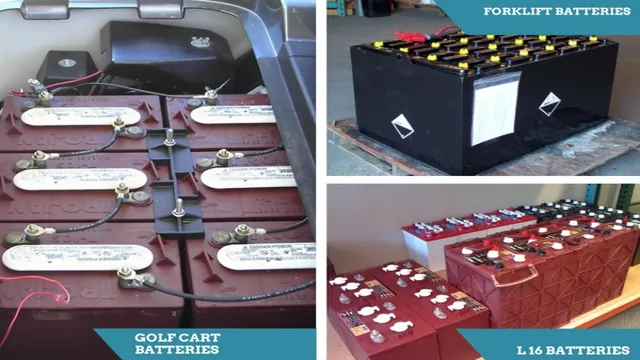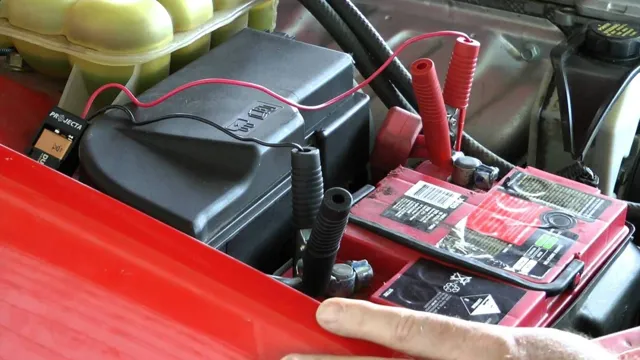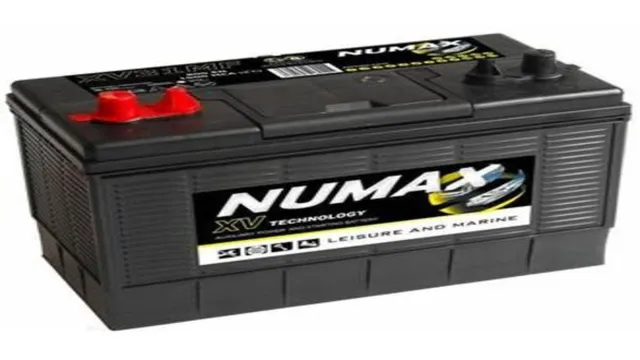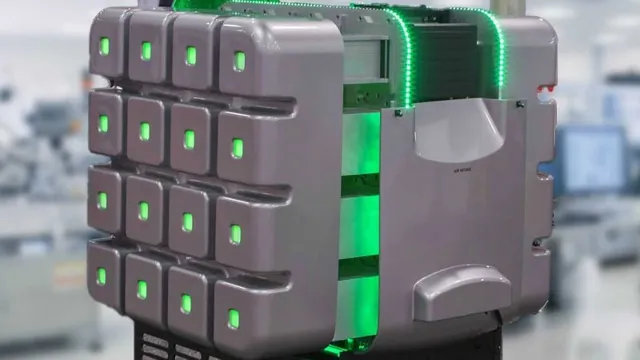Rev Up Your Ride and Save Big: DIY Electric Car Battery Replacement Made Easy!
Have you been looking to replace the battery in your electric car? Perhaps you’ve noticed a decline in performance, or maybe you simply want to upgrade to a better battery. Regardless of the reason, DIY electric car battery replacement is becoming increasingly popular among car enthusiasts who want to save money and customize their vehicles. But before you plunge headfirst into this project, it’s important to understand the basics of electric car batteries.
Unlike traditional car batteries, electric car batteries are much larger and more complex. They are typically made up of many individual battery cells that work together to power the vehicle. The process of replacing an electric car battery can be daunting, but with the right tools and knowledge, it is possible to do it yourself.
It’s important to note that this process should only be attempted by experienced DIYers who feel comfortable working with high-voltage electrical systems. One factor to consider is the type of battery you want to install. Lithium-ion batteries are becoming increasingly popular due to their high energy density, longer lifespan, and lighter weight.
However, they can be more expensive than other types of batteries. Another factor to consider is the size and configuration of the battery. This will vary depending on the make and model of your car, so it’s important to do your research and find a battery that is compatible with your specific vehicle.
Overall, DIY electric car battery replacement can be a challenging but rewarding project for those who are willing to put in the time and effort. As with any DIY project, it’s important to prioritize safety and take all necessary precautions to avoid injury or damage to your vehicle.
Why Replace Your Electric Car Battery
DIY electric car battery replacement can be a tempting task for those who like to tinker with their vehicles. However, when it comes to the battery, it’s not just about saving money, but also about safety. Over time, your electric car battery will lose its capacity to hold a charge, resulting in shorter trips and longer charging times.
While some may believe that simply replacing the battery will solve the problem, it’s important to understand that there could be underlying issues why the battery is degrading. It’s best to have a professional diagnose the issue before attempting to replace a battery on your own. Additionally, if the battery is still under warranty, replacing it yourself could void the warranty.
In the end, while DIY electric car battery replacement might seem like a simple way to fix a problem, it’s important to weigh the risks and ensure you’re making a safe and informed decision.
Cost Savings
Replacing your electric car battery may seem like a daunting and expensive task, but it can actually save you money in the long run. As a battery ages, its capacity to hold a charge decreases, resulting in reduced driving range and performance. This means that you may end up having to charge your vehicle more frequently and experience a decrease in power.
By replacing your battery, you can restore your car’s performance and range, ultimately saving you the hassle and expense of constantly charging and potentially even avoiding costly repairs in the future. Plus, with advancements in battery technology, newer batteries may have even greater capacity and efficiency, providing even more cost savings over time. So, when considering whether to replace your electric car battery, keep in mind the potential cost savings and improved performance that come with a newer, more efficient battery.

Environmental Benefits
If you’re an electric car owner, you’re already contributing to the betterment of the environment. But did you know that replacing your electric car battery can further enhance your environmental impact? By investing in a new battery, you can effectively prolong the lifespan of your electric car, reducing the number of cars that end up in landfills. Moreover, a new battery can provide better performance, which means that your car will consume less energy during operation, further mitigating carbon emissions.
Not only does replacing your battery help save the planet, but it can also save you money in the long run by avoiding costly repairs down the line. Ultimately, making the decision to replace your electric car battery is a powerful step you can take to contribute to a healthier planet – what could be a better investment than that?
Finding a Replacement Battery
If you’re looking to replace the battery on your DIY electric car, the process may seem daunting at first. But with a little research and some careful planning, it’s possible to find a replacement battery that meets your needs and budget. Start by considering the type of battery you need – there are a variety of options available, including lead-acid, lithium-ion, and nickel-metal hydride.
You’ll also want to think about the voltage and capacity required for your specific vehicle. Once you have a good idea of what you’re looking for, start shopping around for batteries from reputable manufacturers. Look for reviews from other electric car owners to get a sense of how different batteries perform in the real world.
Finally, don’t be afraid to ask for help from other DIY electric car enthusiasts – they may have valuable insights and advice to share. With a little patience and persistence, you can find a replacement battery that will keep your electric car running smoothly for years to come.
Compatibility
When looking for a replacement battery, compatibility is always a top concern for individuals. It can be frustrating to purchase a battery, only to find out it isn’t compatible with the device in question. Thankfully, there are ways to ensure you’re purchasing the correct battery.
Firstly, check the device’s user manual or manufacturer’s website for information on compatible batteries. It’s also important to consider the battery’s voltage and capacity, as they need to match the original battery. Additionally, researching the brand and customer reviews can give insight into the quality and compatibility of the battery.
While finding a replacement battery can seem daunting, taking the time to research and ensure compatibility will save time and money in the long run.
Capacity and Range
When it comes to finding a replacement battery for your device, two factors you need to consider are capacity and range. Capacity refers to the amount of energy the battery can store and how long it can power your device. Range, on the other hand, refers to the distance or duration your device can travel or run on a single charge.
It’s important to find a replacement battery that offers both a high capacity and range that matches your device’s requirements. You don’t want to end up with a battery that can store a lot of energy but drains quickly, or one that can power your device for a long time, but can’t keep up with its demands. To ensure you get the right battery, it’s best to check your device’s original battery specifications so you can find a compatible replacement with the same capacity and range.
By doing so, you’ll prevent any unexpected shutdowns or performance issues and keep your device running smoothly.
Tools and Supplies
If you’re looking to replace the battery in your DIY electric car, it’s important to have the right tools and supplies on hand. First and foremost, you’ll need a reliable set of wrenches and pliers to remove the old battery and install the new one. It’s also important to have a good pair of safety gloves and goggles to protect yourself during the process.
In terms of supplies, you’ll need a new battery that’s compatible with your electric car’s make and model, as well as any necessary cables and connectors. You may also need a battery charger to ensure that your new battery is fully charged and ready to roll. By having all of the right tools and supplies, you’ll be able to replace your electric car’s battery safely and efficiently without any hiccups along the way.
So go ahead and give your DIY electric car the boost it needs with a new battery replacement.
Screwdrivers and Wrenches
Tools and Supplies If you are looking to tackle DIY projects around the house or you’re a professional contractor, then you will need a set of reliable tools to get the job done. Among the most commonly used tools are screwdrivers and wrenches. Screwdrivers are essential for driving screws, while wrenches are best for turning nuts and bolts.
When it comes to screwdrivers, there are different types available such as flathead and Phillips variations. Similarly, wrenches come in various sizes and shapes, including adjustable, combination, open-end, and socket wrenches. Remember to choose the right tool for the job to ensure efficiency.
For instance, if you’re working with screws that have an X-shaped head, then you’ll need a Phillips screwdriver instead of a flathead. Having good quality tools at your disposal not only makes your work easier and faster but also ensures safety and accuracy. Plus, it’s always satisfying to be able to fix things around the house yourself!
Gloves and Safety Gear
When it comes to DIY projects, having the right tools and supplies is essential for both success and safety. One of the most important items to consider is gloves and safety gear. Whether you’re working with power tools or handling hazardous materials, using gloves can prevent cuts, burns, and other injuries.
It’s important to choose gloves that are appropriate for the task at hand, such as waterproof gloves for handling chemicals or heat-resistant gloves for working with hot materials. Along with gloves, you should also consider other safety gear such as goggles and respiratory masks to protect your eyes and lungs from harmful substances. Always read instructions carefully and follow safety guidelines when working with potentially dangerous tools and materials.
Your safety should always be a top priority, and the proper use of gloves and safety gear can make all the difference. So, next time you stock up on supplies for your DIY project, make sure to prioritize safety and include gloves and other protective gear to keep you safe and working effectively.
Step-by-Step Guide
If you’re looking to replace the battery in your electric car, doing it yourself can be a great option. Not only can it save you money, but it also allows you to customize your battery setup to fit your specific needs. The first step is to determine the type of battery your car requires.
Lithium-ion batteries are popular in modern electric cars, but older models may use lead-acid or nickel-metal hydride batteries. Once you’ve identified the type of battery, you’ll need to disconnect the old battery and remove it from the car. Take any necessary safety precautions, such as wearing gloves and goggles, to avoid electric shock.
Then, install the new battery, making sure to connect it correctly and securely. Test the battery to make sure it’s functioning properly before driving your electric car again. Remember to properly dispose of the old battery in an eco-friendly way.
By following these steps, you can successfully replace your electric car battery and keep your vehicle running smoothly.
Disconnecting the Old Battery
Disconnecting the old battery is an essential step when replacing it with a new one. Firstly, make sure the engine is off and the car is in park or gear. If you’re working on a hybrid vehicle, check the owner’s manual for specific instructions.
Next, disconnect the negative cable from the battery. The negative cable is typically black, and you should loosen the nut on the cable clamp until it comes off the battery terminal. Be sure to secure the cable to prevent it from coming in contact with any metal surfaces.
After disconnecting the negative cable, repeat the process with the positive cable, which is usually red. Once both cables are disconnected, you can remove the old battery from the vehicle. Remember to handle the battery with care, as it can be heavy and contain corrosive materials.
By following these steps, you can safely and efficiently disconnect the old battery before replacing it with a new one.
Installing the New Battery
Installing a new battery in your car can be a daunting task, but with the right tools and knowledge, it can be done easily. First, ensure that your car is turned off and the keys are removed from the ignition. Locate the battery, which is usually located underneath the hood, and remove the negative cable first using a wrench or pliers.
Then remove the positive cable in the same manner. Next, use a battery cleaner and brush to clean any corrosion or debris from the terminals. Now it’s time to install the new battery, ensuring that it is the correct size and orientation.
Connect the positive cable first and then the negative cable, securing them tightly with the wrench or pliers. Double-check the connections to ensure they are secure and tight. Finally, turn on your car to make sure everything is working properly.
With these simple steps, you can successfully install a new battery and ensure that your car is running smoothly again.
Conclusion
In conclusion, replacing your electric car battery can be an electrifying DIY project that not only saves you money, but also reduces your carbon footprint. With a little know-how and patience, you can rev up your ride and keep it running smoothly for years to come. So go ahead, spark some ingenuity and give your electric vehicle the jolt it needs!”
FAQs
What are the benefits of DIY electric car battery replacement?
DIY electric car battery replacement can save you money on labor costs and can provide a sense of satisfaction from completing the job yourself.
Is it easy to replace an electric car battery yourself?
It depends on your skill level and experience with car repairs. If you have experience with car repairs and access to the proper tools, DIY electric car battery replacement can be doable.
What are the risks of DIY electric car battery replacement?
DIY electric car battery replacement can be dangerous if you don’t know what you’re doing. Accidentally touching the wrong wires or improper handling of the battery can result in injury or even death.
What should I consider before attempting DIY electric car battery replacement?
You should assess your skill level, obtain the proper tools and safety equipment, have a good understanding of the car’s electrical system, and follow manufacturer instructions carefully before attempting DIY electric car battery replacement.




